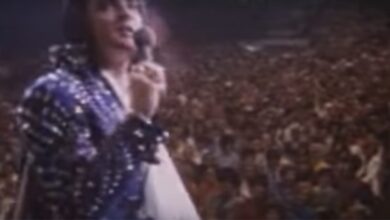Everyone Knew About This Dance In The 1950s, Do You Recall It Today
In February 1958, “The Stroll” emerged as a dance craze that captivated American high school students and social events, embodying the vibrant spirit of the era’s rock ‘n’ roll culture. This line dance, which originated from African American communities, was popularized through television, particularly on Dick Clark’s “American Bandstand.” Teenagers across the country flocked to their local gatherings, eager to participate in this new and exciting dance trend.
“The Stroll” featured a distinctive format where two lines of dancers faced each other, creating an aisle down the center. Couples would take turns strutting down this aisle, showcasing their personal flair while moving in time with the music. The dance’s structure allowed for both group participation and individual expression, resonating with a generation eager to define their own identities within a rapidly changing social landscape.
The soundtrack to “The Stroll” was provided by The Diamonds, a Canadian doo-wop group known for their smooth harmonies and catchy tunes. Their hit song “The Stroll” became the anthem of the dance craze, with lead singer Dave Somerville’s rich baritone voice guiding dancers through the movements. The Diamonds’ performance helped cement the dance’s place in popular culture, making it an integral part of the era’s music scene.
The widespread appeal of “The Stroll” transcended racial and social boundaries during a time of significant segregation in the United States. Its simplicity and accessibility made it a hit among teenagers from diverse backgrounds, while its inherent coolness captured the optimism of post-war America. Young people, dressed in their best attire, enthusiastically embraced the dance, reflecting a collective desire to be part of the latest cultural trend.
As “The Stroll” continued to gain popularity, it became a staple at dance events across the country. The dance’s infectious energy and the sense of communal fun it fostered made it a memorable phenomenon of the late 1950s. Its success illustrated the power of music and dance in bringing people together and creating shared experiences, leaving an enduring legacy in American pop culture.
The dance craze’s impact extended beyond its immediate popularity, influencing subsequent generations and contributing to the evolution of social dancing. “The Stroll” remains a nostalgic symbol of the rock ‘n’ roll era, reflecting a time when music and dance were central to the youthful experience and cultural expression.
?si=CbHsPwTM-VodZAIG





